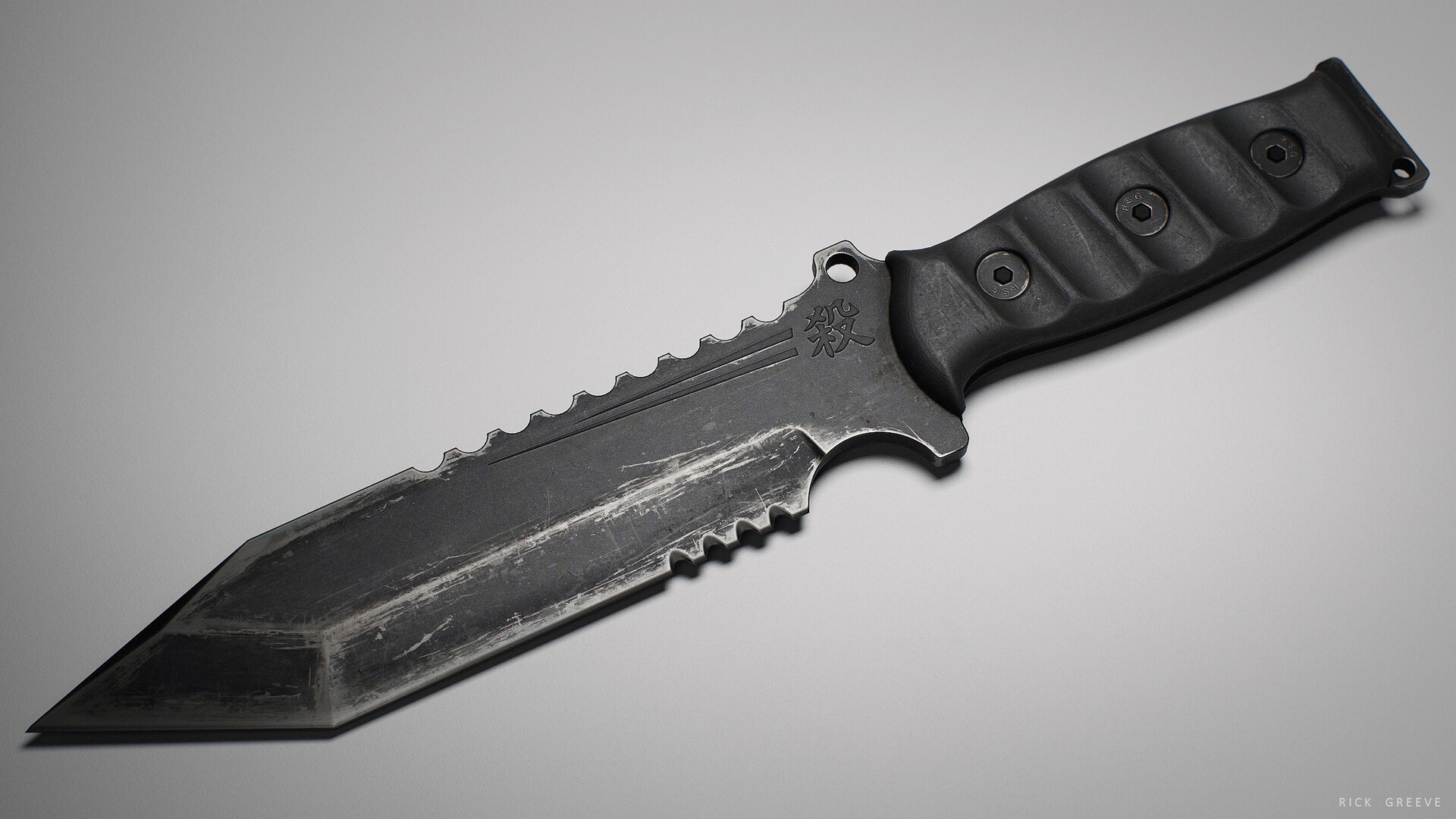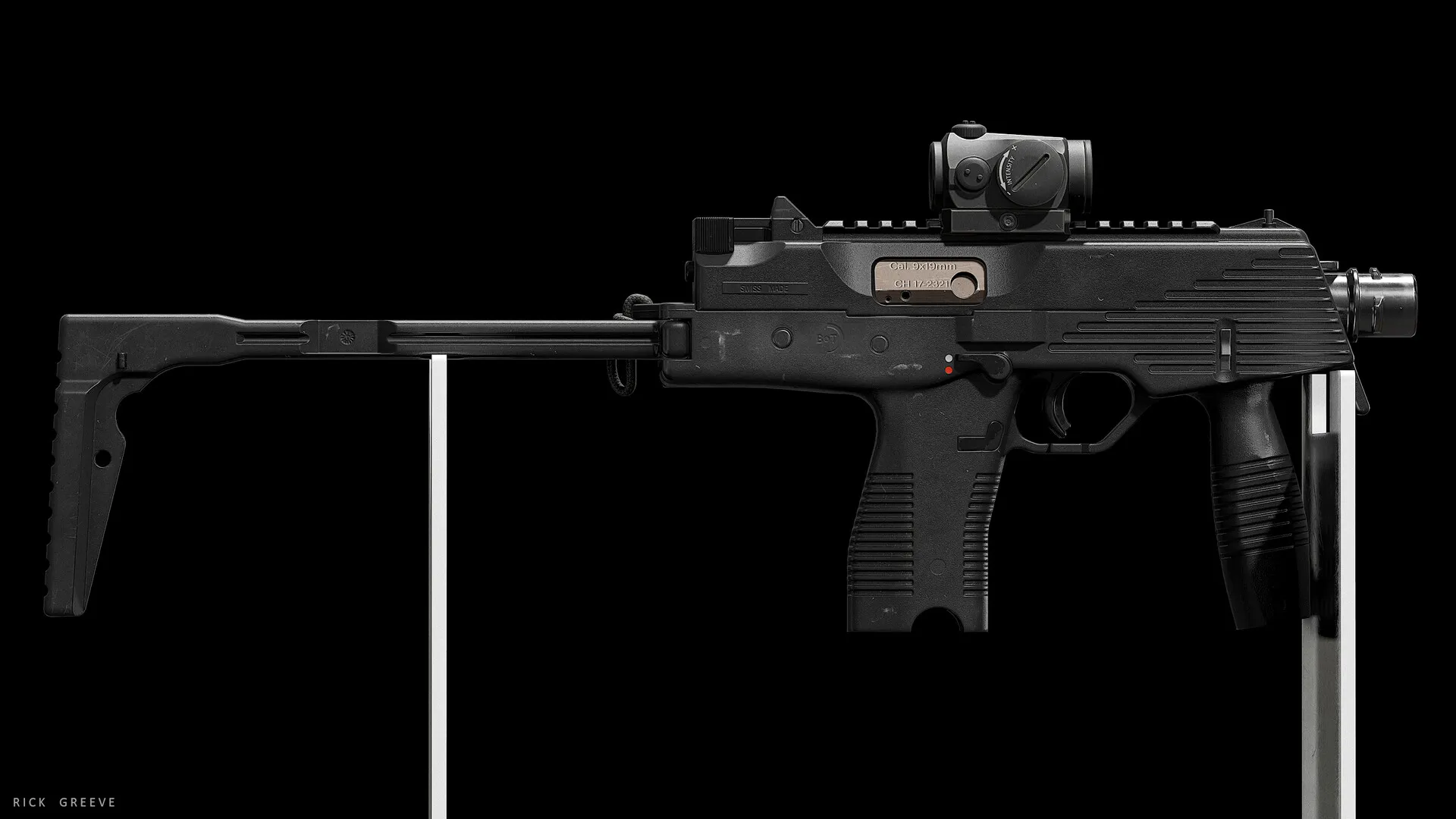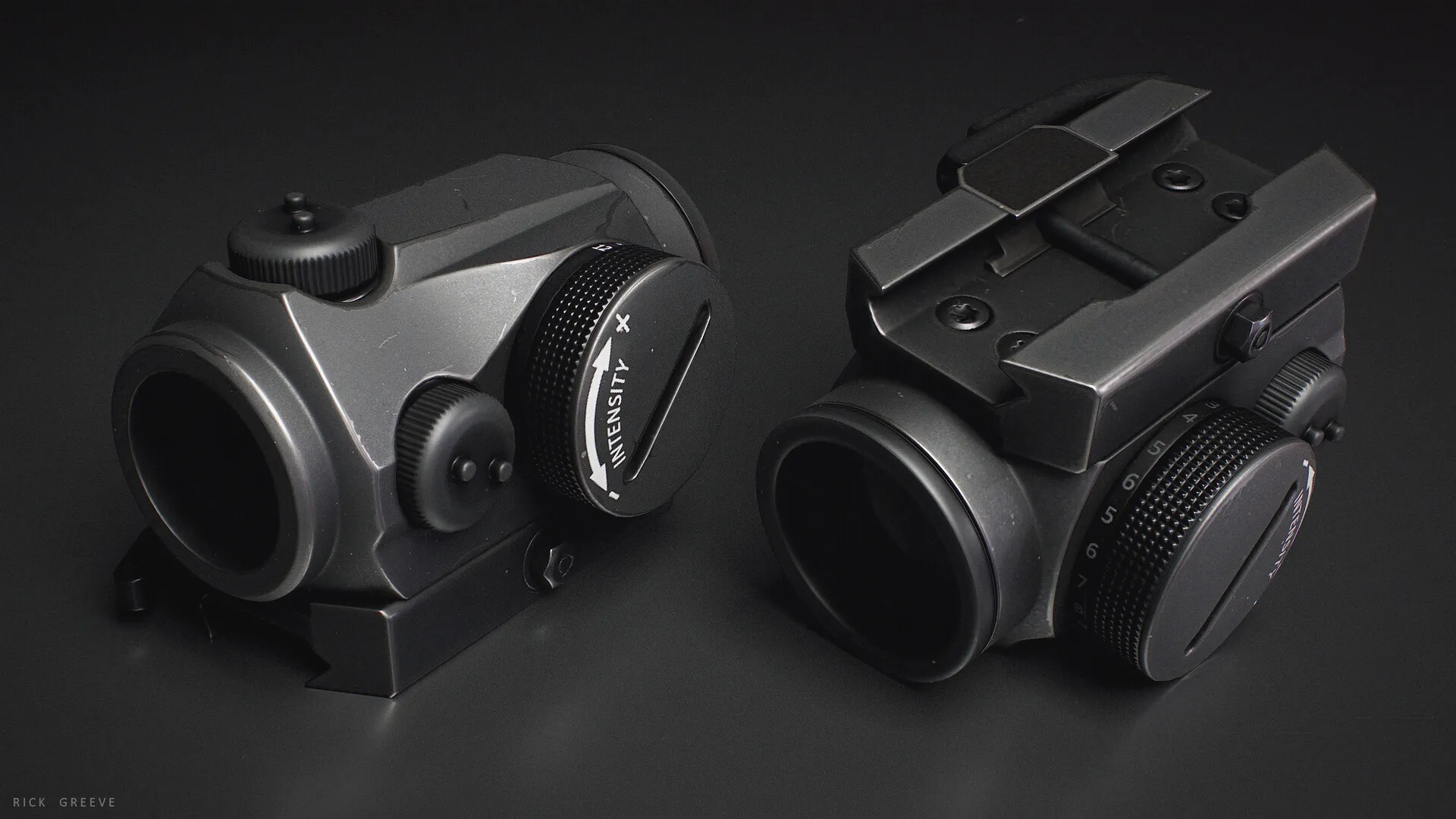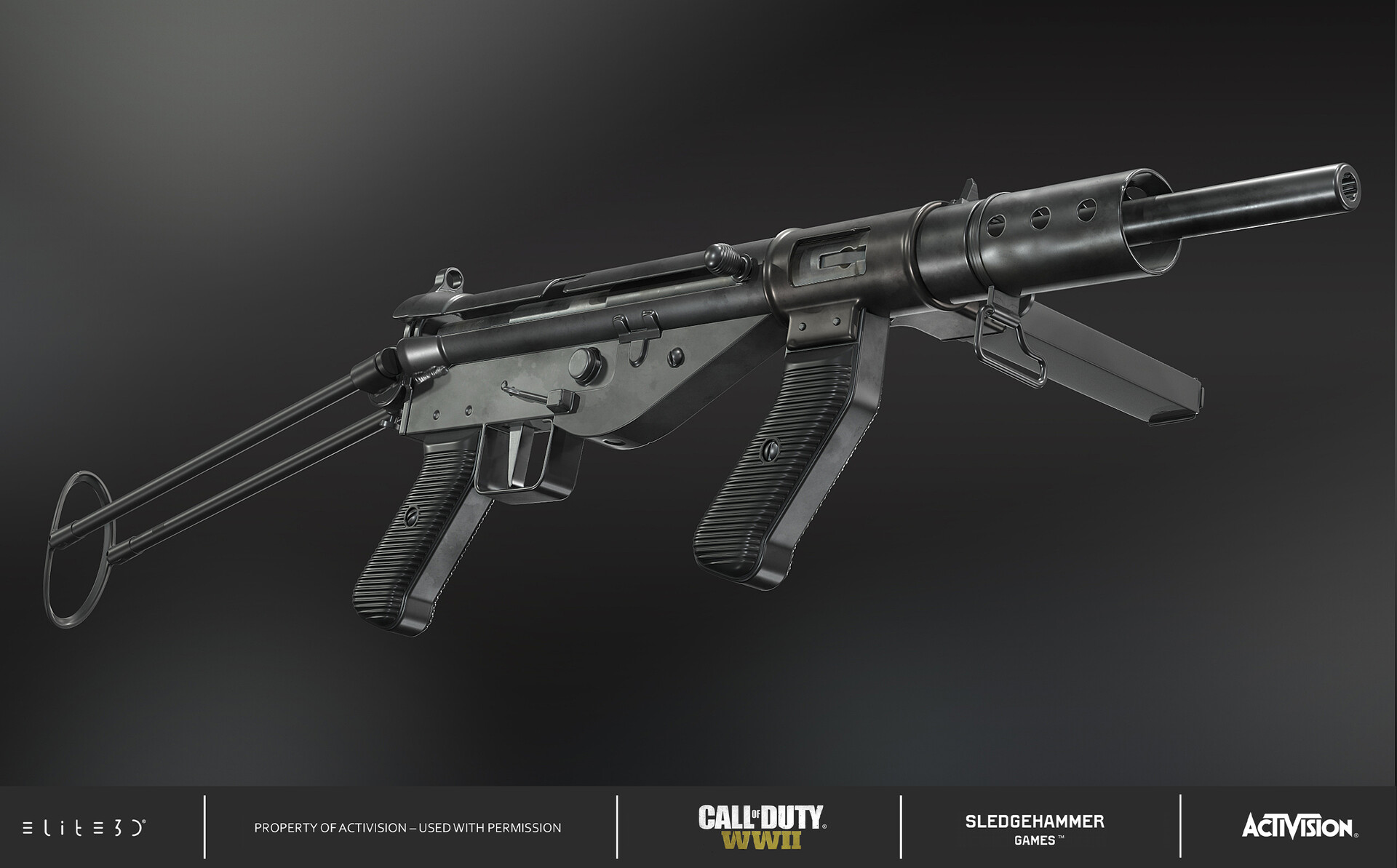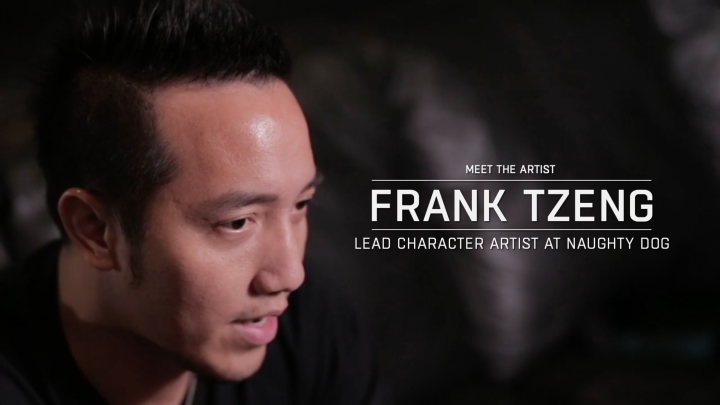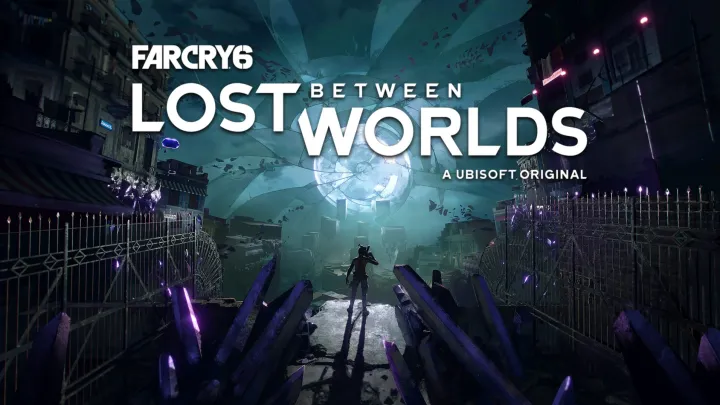Creating and Texturing with Custom Stencils featuring Rick Greeve
For this interview with ArtStation Learning instructor Rick Greeve, we were able to ask Rick about what inspired him to develop his own workflow for creating and using custom stencils with Substance Painter. We also had the opportunity to learn what he finds exciting about being a weapon and hard surface artist.
Rick Greeve is a Weapon Artist at Deep Silver Dambuster Studios. He specializes in the creation of hard surface assets that are functional in a first-person scenario. Rick started his career at elite3D where he made weapons and other hard surface works for Call of Duty among other projects.
Behind the course:
I have been using Substance Painter pretty much since it first existed. Over the last year or so I have been using stencils more heavily in my texture workflow. I did a lot of experimenting with making my own stencils from photo sources and using them to paint most of my details in Substance Painter. There weren’t many resources on this particular workflow online. To my understanding that is because people tend to overlook the stencil feature, deriving detail through procedural means instead, since doing so is quicker.
Trying to work with generators and grunges to get results similar to stencils just wasn’t producing the same quality for me, and hand-painting details was simply too time-consuming. Stencils are a great middle-ground. They are faster than hand painting and they result in better quality than procedural workflows because we can derive stencils from photos. I think people will benefit from knowing how to make and use stencils because of this.
What do you enjoy most about being a weapon & hard surface artist?
Weapons in First Person Shooters get a special kind of attention that a lot of other assets don’t. An asset that’s so close to the player and takes up that much space on the screen just screams that it needs detail. Texturing is probably my favourite stage of the pipeline, and being able to add that much detail makes it so much more enjoyable and rewarding for me. I also love the mechanics that go into firearms, the aesthetics, and the way they operate. Creating hard surface assets also gives you clean surfaces to really focus on the texturing. Whether it’s a prop, a vehicle, or a weapon, it’s always a challenge to create realistic and good-looking textures, and I love that.
How can newer artists best train their eye for detail?
I believe that if you want to create realistic game assets the best way to train your eye is through references. Try analyzing and comparing your own work to a reference image and play a game of spot the difference. Making a habit of studying your reference before and during the creation of an asset is key. Getting a good reference of the object or surface you are trying to replicate is sometimes half the work.
Most memorable learning experience?
Two things come to mind. One is when I got my first job in the industry at the start of 2018 at elite3D. I was very fortunate to join an extremely talented team of weapon artists and they taught me a lot of what I know today. Before joining a professional environment like this I was doing a lot of things wrong and they helped me get on the right track, mentoring me to build the right habits.
The second is surrounding myself with talented artists and making friends. Finding a tight-knit group of people striving for similar goals has been nothing but valuable. Being able to bounce ideas, give each other constructive criticism, talk about careers, etc. has helped me become better as an artist, and as a person.
1 sentence of advice?
Spend your time practicing to get better.
I suggest critically looking at your own work. Find art communities to interact with, where you can post your work for feedback. This will make sure you are spending that time correctly. Whether you are a student trying to break into the industry or are already a professional, spending time in your craft and getting input from others will further develop your skills as an artist and help you on your career path.
ArtStation Learning courses are included in all ArtStation premium subscriptions. Find out more >
See Rick’s ArtStation portfolio here.
